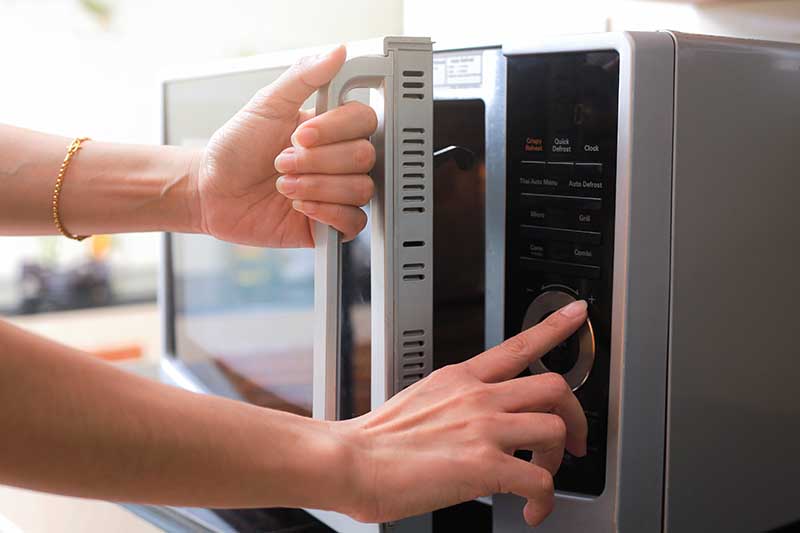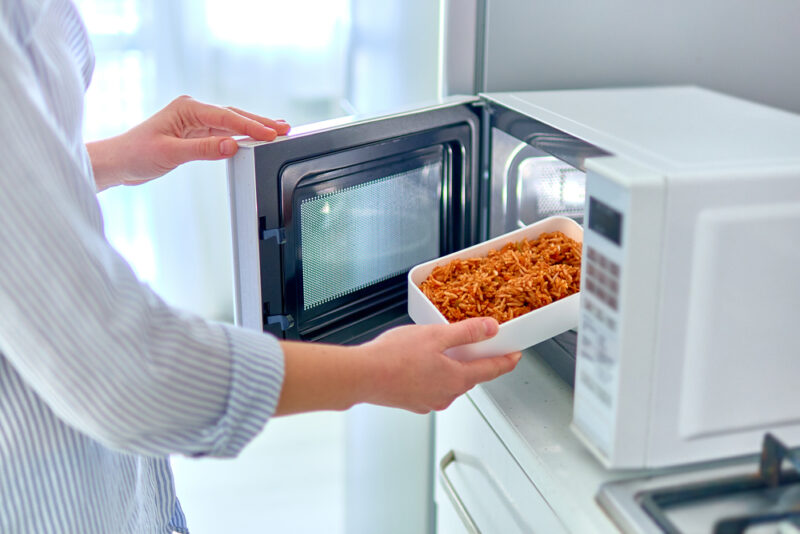How Hot Does a Microwave Get? (Microwave Safety Tips)
-
Codee Chessher
- Last updated:

This is a bit of a trick question because, unlike conventional cooking appliances, microwaves don’t actually heat up to cook and reheat food. They lack heating elements altogether, using a fancy device called a magnetron to produce radiation.
That high-frequency radiation then penetrates into your food and excites the water molecules. That’s right, the microwave doesn’t really heat your food up. The excited water molecules rise in temperature and your food follows suit. This can also explain the infamous cold-in-the-middle effect that happens sometimes as water molecules are unevenly excited by radiation.
This also means the cooking chamber in your microwave never gets hot at any point. In fact, the metal walls specifically bounce the radiation waves around the microwave and into your food, where they bounce the molecules around billions of times per second.
How Hot Does Food Get in the Microwave?
In theory, the hottest food can get is 212 degrees Fahrenheit, which is the boiling point of water. That’s because the water heated by the microwave radiation literally evaporates away at that temperature. In reality, food may or may not get anywhere near 212 degrees.
You’ll probably be surprised to hear that how fast your food cooks in the microwave depends on numerous factors. If you’ve been suffering from poorly, unevenly heated food in your microwave, one of these may be the culprit:
- Moisture content
- Fat content
- Shape and thickness of food
- Distribution of food items in the microwave
- Type, shape, and material of the microwaved container
For instance, lasagna takes forever to microwave because it’s very thick and has a high moisture content. Using a container covered with plastic wrap can help keep the moisture in your food, which helps the food cook faster. More hot water in the food directly means more heat, after all. By the same token, drier foods will take longer to heat in the microwave.
Reheating food in glass or ceramic dishes will work better than a plastic dish, but the former dishes will get very hot and potentially dangerous to handle.

Are Microwaves Safe?
Just like any other cooking appliance, a microwave is perfectly safe as long as there are no serious problems with it.
Unfortunately, damaged and faulty microwaves can pose some serious health risks. The EPA says that microwaves can leak radiation when modified or broken, and there’s no way to detect microwave radiation leaks at a glance. That’s also why they say you shouldn’t stand in front of the microwave. If that sounds scary, don’t worry too much—those types of incidents are nearly unheard of.
Most so-called microwave accidents are actually the result of people burning themselves on hot food, dishes, and superheated liquids. Another common cause is cuts from dropping glass or ceramic dishes.
Regardless, you can protect yourself from microwave-related injury by just adhering to a handful of basic safety tips. Let’s take a brief glance at those below.
Tips for Safely Using a Microwave:
- Read the microwave manufacturer’s instructions carefully.
- Always make sure your container is microwave-safe. For plastic, check for the “microwave safe” label on the bottom or packaging.
- Beware of superheated water, which is seemingly still water heated past its boiling point and up to 248 degrees Fahrenheit. Allow water to cool for a moment after the microwave is finished to avoid scalding burns.
- Handle hot dishes with oven mitts or heat-resistant kitchen gloves
- Immediately stop using your microwave if it seems to work when the door is partially or fully open. This may signal a radiation leak caused by damage or malfunctions.
In Conclusion
Microwaves are pretty safe, but can seem dangerous because they use radiation instead of heating elements to cook food. It may seem natural to think the inside of the chamber gets hot, but it’s really only the food, and it can reach up to 212 degrees Fahrenheit in ideal conditions.
- Related Read: What Is a Convection Microwave? How Do They Work?
Featured Image Credit: Zyn Chakrapong, Shutterstock
